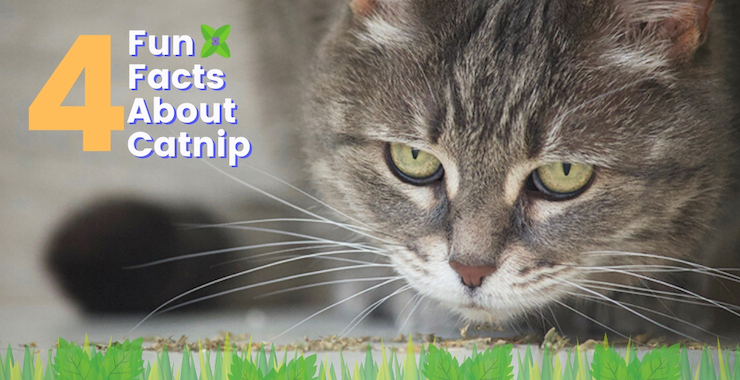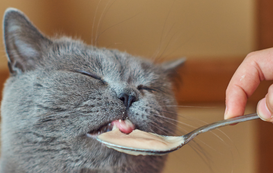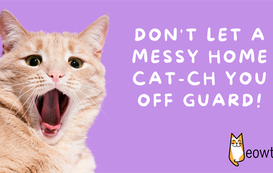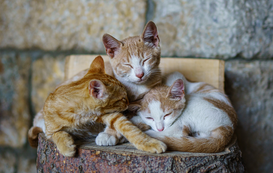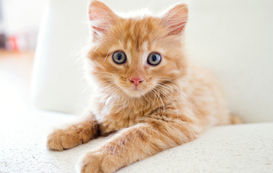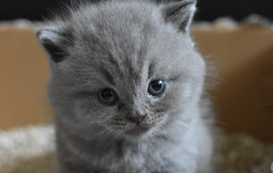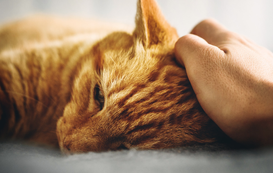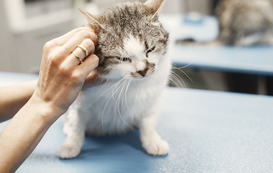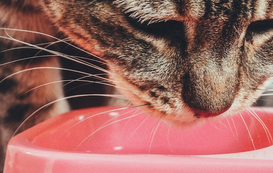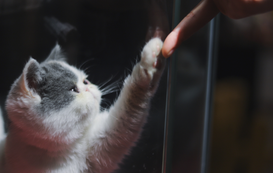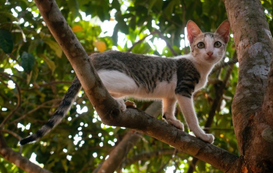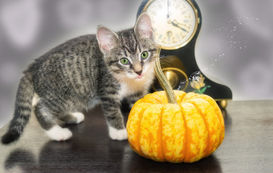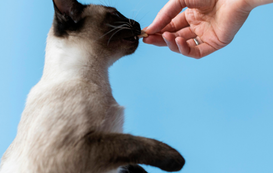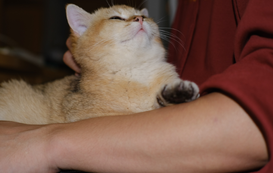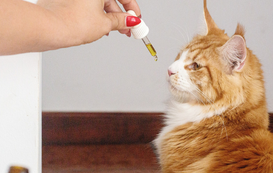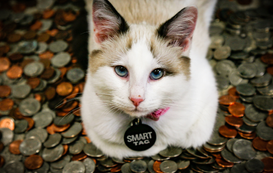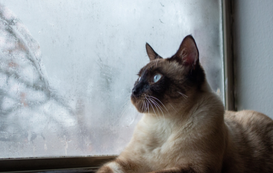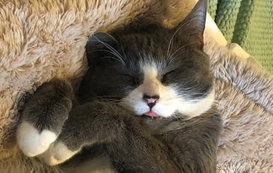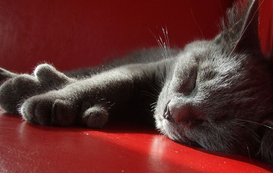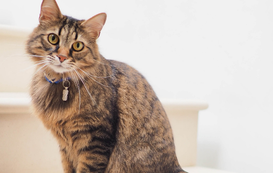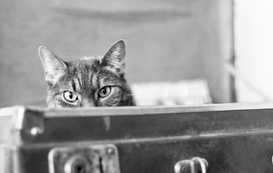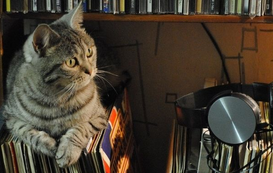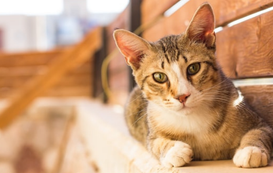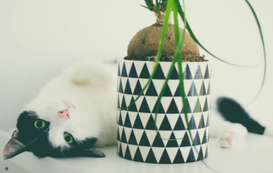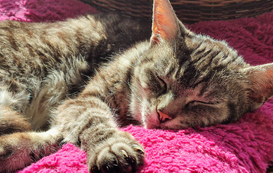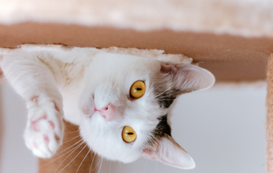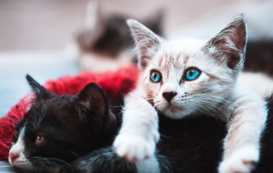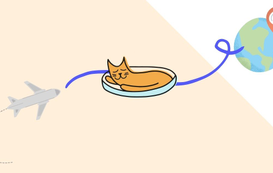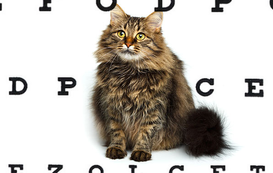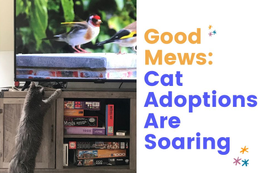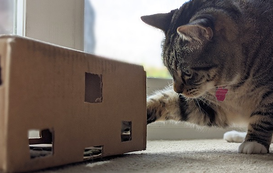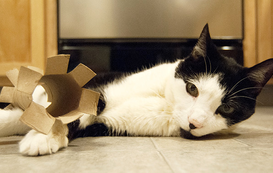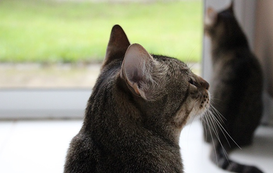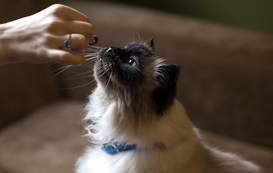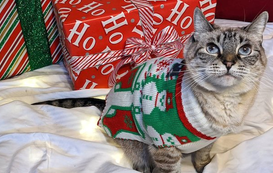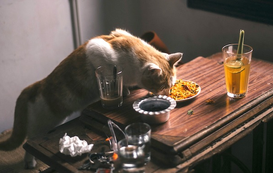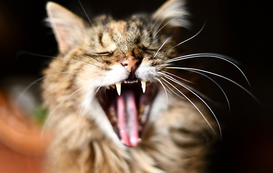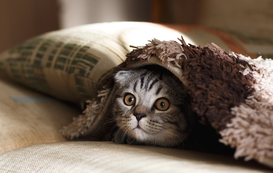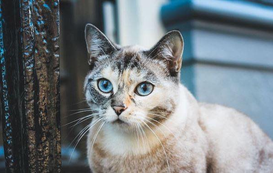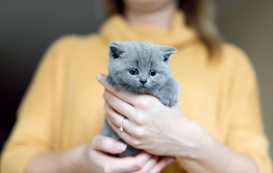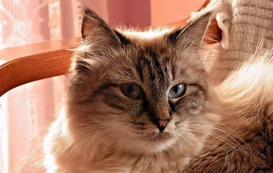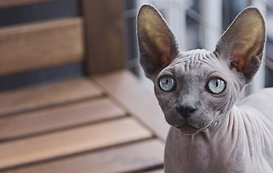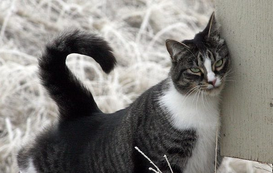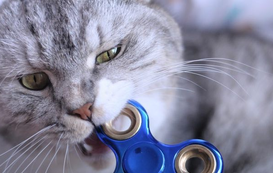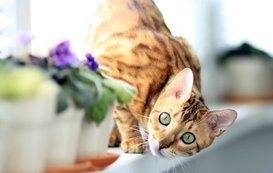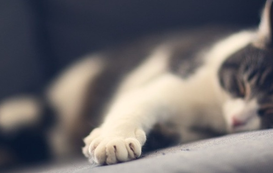Popular posts
Four Interesting Facts About Catnip
Let me bring you back to the summer of 2017. I had just gotten my new kitten, Fitzmaurice, and I was in love. And to be honest, I was also pumped about the cute cat pictures and videos that were in my future. Unofficial sidenote: follow him at @fitzthemunchkin. Now, at the very top of that photo and video to-do list was him on catnip. I couldn’t wait to watch (and laugh hissterically) at my little munchkin kitty happily blissed out.
The day that I introduced Fitz to catnip was months in the making. I knew (thanks to my vet) not to give catnip to him until he was at least 6 months; so as I waited for him to become old enough, I prepared. I got dry catnip, fresh catnip, the catnip grass, catnip spray, and catnip filled toys. I had it all. When the time came, the first thing I did was lightly spray the air with an intoxicating catnip mist, then I prepared his favorite scratcher by sprinkling it with dry catnip, and I waited.
He came. He sniffed. He walked away.
That’s right. He walked away. Not one ounce of blissful, high-on-life kitty to be seen. He was unaffected. I couldn’t believe it. I thought catnip was every cat’s “drug” of choice. My fellow cat parent friends loved to relay funny stories about their cat on the 'nip. Was Fitz broken? Did I get a defective kitten? Was he even a real cat?
Yes, I realized my brain jumped to some crazy places. So, to calm my anxieties, I did what anyone would do: I Googled it. Luckily, a quick Google search of “My cat doesn’t like catnip. Is that normal?” (cat)nipped my fears in the bud pretty quickly, and I actually learned some interesting facts.
Interesting Fact #1: It’s All Science
Call it what you will—catmint, catworm, catwort— Nepeta cataria (aka catnip) is a member of the mint family. It’s similar to the herbs rosemary, sage, and oregano, but what makes this particular plant so appealing to felines is the nepetalactone that the plant emits. It is when this volatile oil enters a kitty’s nose that the fun begins.
ScientificAmerican.com does a really great job in explaining the science between catnip and cats, but the basic gist is when a cat smells catnip, the nepetalactone gets into their nose and eventually finds it way to their hypothalamus, the part of their brain that regulates emotions. The catnip then does it magic and makes the cat react in certain ways.1
Behaviors of cats can range from acting like they are in heat, rubbing their heads and body all over the catnip, salivating, vocalizing, jumping around, and licking.1
Yet that only happens to about 70-80% of cats, and the catnip response gene, as I like to call it, is heredity. They either have it, or they don’t.3 There is no inbetween. (Conclusion: Fitz is not broken. He just didn’t get the catnip gene. Whew.)
Interesting Fact #2: 10 Minutes in Heaven
Luckily, or unluckily depending on how you look at it, catnip “highs” only last for about ten minutes, and then it takes anywhere from 30 minutes to two hours for your cat to reset to be susceptible to its charms again. But the Humane Society points out to beware of kitty “overindulgence” because they can get sick if they have too much.2
Interesting Fact #3: So Many Forms, So Little Time
Catnip comes in all shapes and forms. From sprays, to toys, to the real grass, there is no shortage of ways for your kitty to get it. Personally, I loved growing it. Why? Because it grew so quickly and aggressively, that I felt that I had a green thumb. Plus, it looked lush and green in my window. Aesthetically pleasing while being cat friendly. Win-win.
One of the easiest ways to give your kitty the goods is to put it in his toys. (If you don’t have any cat toys that can hold catnip, fear not. We actually made a video for DIY Catnip Socks. An easy craft for lots of catnip-filled playtime.) Pro Tip: If you use the dry stuff, the Humane Society recommends to keep it in the freezer when not in use because those volatile oils can dry out pretty quickly.
Interesting Fact #4: Not just for Fluffy; humans can partake, too
Apparently, it’s not just cats who get to have all the fun. While of course human brains are different than cat brains, which means that humans don’t experience that catnip “high”, we have found other uses for Nepeta cataria throughout the centuries.
It’s reported that in the 1600s in Europe, people used catnip as a “mild sedative” putting it in teas.3 It was also thought at one point to “cure colic in infants and excessive flatulences, hives, and toothaches in adults”.3
Yet, most surprising, according to Joseph Stromberg of Vox, is in the 1960’s “..., scientists discovered that catnip's active chemical acts as a mosquito repellant — one that's actually more powerful than DEET, though it wears off more quickly. In fact, if you want a less harsh alternative to DEET, catnip-based mosquito repellents are still available.”3
So, there you have it. The cat(nip) is out of the bag. If your cat is one of the 70% that loves catnip, be sure to let your Meowtel sitter know. Sitters love playtime and want to cater the visit to your cats wants and needs. They’ll probably catch Fluffy and Peanut blissed out and enjoying life!
Frequently Asked Questions
Q: How do you determine if a cat has the catnip response gene?
A: Determining if a cat has the catnip response gene involves observing your cat's behavior when exposed to catnip. Typically, if a cat possesses this gene, they will exhibit noticeable reactions such as rolling, rubbing, drooling, or leaping in response to the herb. However, there isn't a commercial genetic test available for this specific gene, so observation remains the primary method for cat owners to determine their pet's sensitivity to catnip.
Q: Are there any alternative plants or substances that have a similar effect to catnip for cats that don't respond to it?
A: For cats that don't respond to catnip, there are indeed alternatives that might interest them. One such plant is silver vine, which can have a similar, if not stronger, effect on cats. Another option is valerian root, which contains actinidine, a compound that can also stimulate cats. Both are known to affect a significant percentage of cats that show no interest in catnip and can be used in similar ways, such as in toys or sprinkled on scratching posts.
Q: What are the specific symptoms or signs of catnip overindulgence in cats?
A: When it comes to overindulgence in catnip, cat owners should watch for signs such as excessive meowing, agitation, or mild digestive upset. In most cases, these symptoms are mild and temporary, resolving as the effects of the catnip wear off. To prevent overindulgence, it's wise to control the amount of catnip offered during each session, ensuring it's a small, manageable quantity. If a cat does appear to have a negative reaction, reducing the frequency and amount of catnip provided in future sessions is recommended, and consulting a veterinarian if severe or persistent symptoms occur.
- Scientific American. (2007, March 29). How Does Catnip Work Its Magic On Cats? Retrieved from https://www.scientificamerican.com/article/experts-how-does-catnip-work-on-cats
- Humane Society. (2020). Crazy for catnip. Retrieved from https://www.humanesociety.org/resources/crazy-catnip
- Stromberg, Joseph. (2014, December 20). How catnip gets your cat high. Retrieved from https://www.vox.com/2014/9/12/6136451/catnip-cats-science
- Weisberger, Mindy. (2019, November 3). Does Catnip Really Make Cats ‘High’? Retreived from https://www.livescience.com/does-catnip-get-cats-high.html
Meowdel: Sage in Dallas

